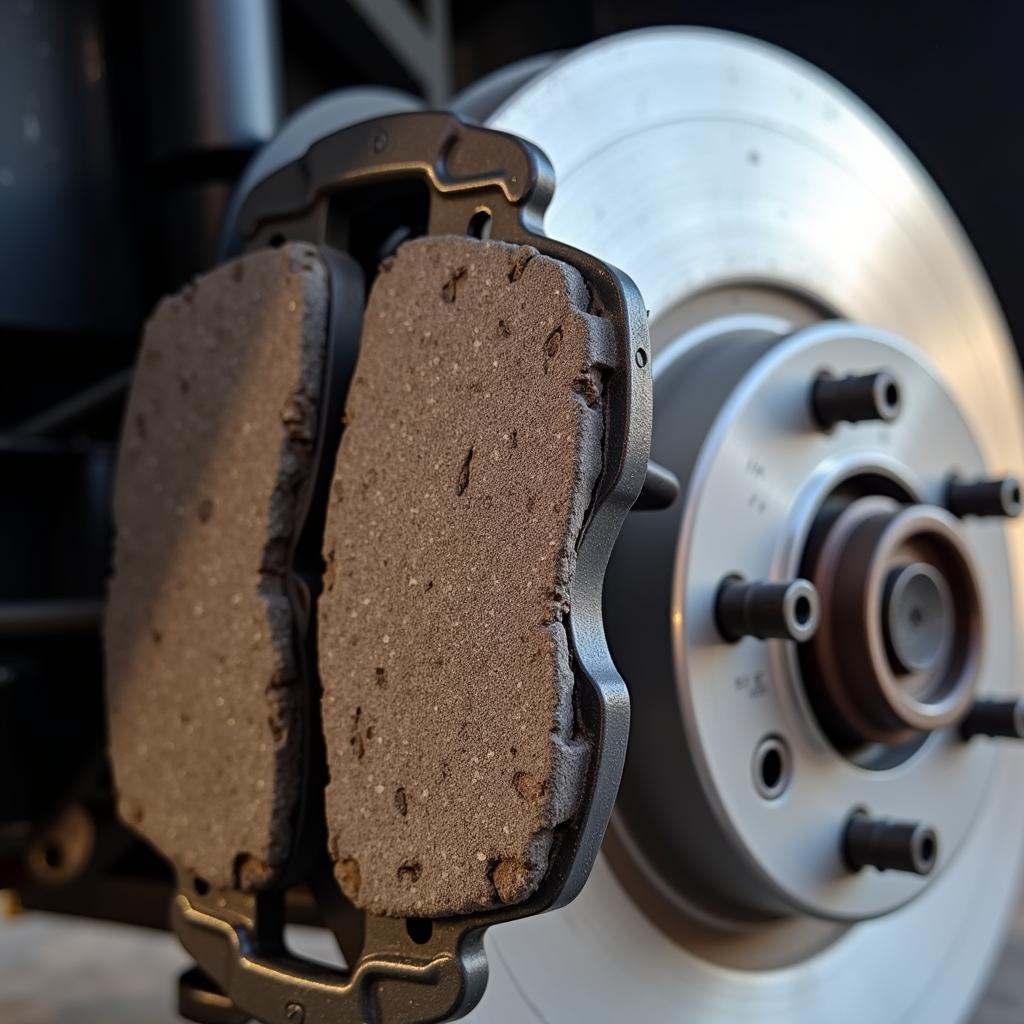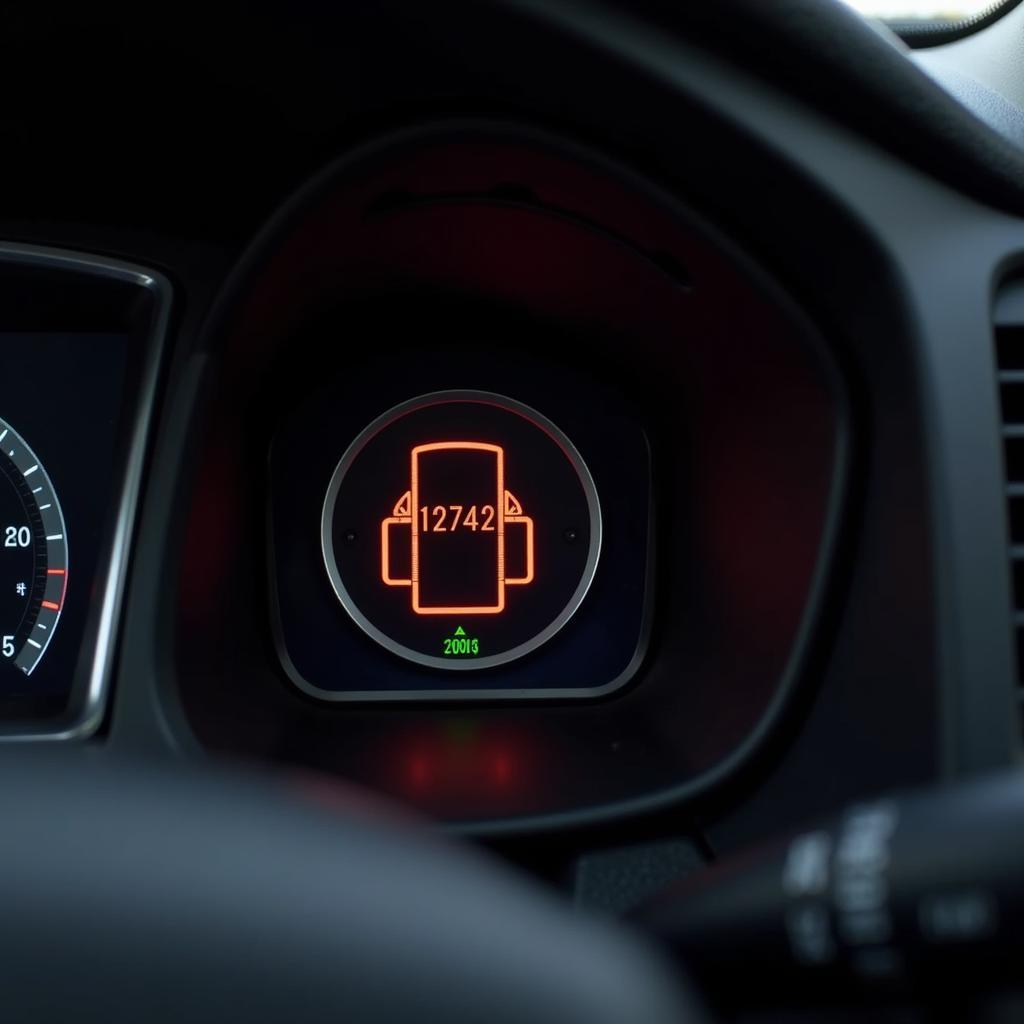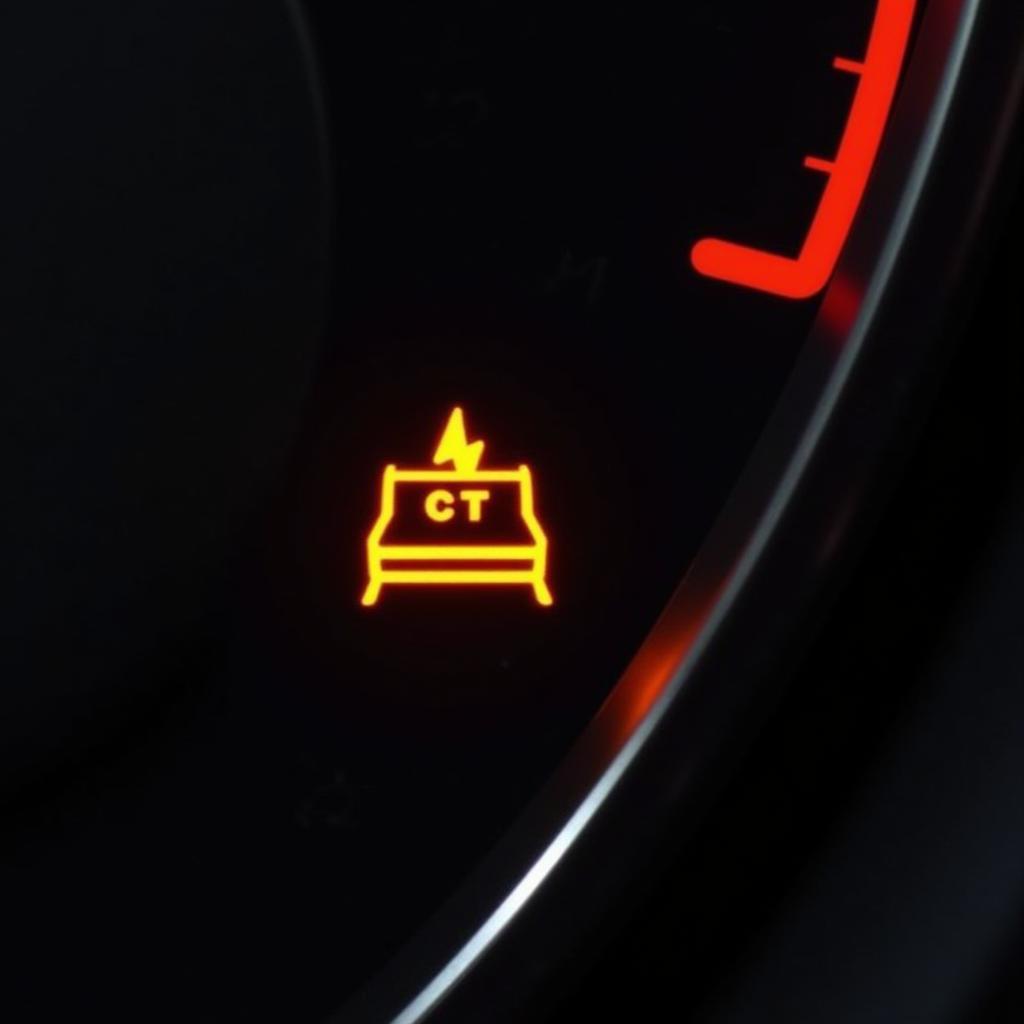The front brake warning tab is a crucial safety feature in your vehicle, alerting you to potential issues with your braking system. A lit or activated warning tab indicates a problem that requires immediate attention to ensure your safety and the proper functioning of your brakes. Let’s explore the common causes and solutions for this warning. If you’re experiencing a Passat B5 brake pad warning, this information may be particularly relevant.
Understanding the Front Brake Warning Tab
The front brake warning tab is triggered by various components within your braking system. These components work together to provide the necessary stopping power for your vehicle. When the warning tab illuminates, it signals a potential malfunction within this complex system.
One of the most common causes is worn brake pads. Brake pads are designed to wear down over time, and when they reach a certain thickness, the warning tab is activated. This tab is connected to a sensor within the brake pad assembly.
Another potential cause is low brake fluid. The brake system relies on hydraulic pressure to function correctly. Low brake fluid levels can significantly reduce braking performance and activate the warning tab. Sometimes, a leak in the combination proportioning brake light warning switch can lead to low brake fluid.
Diagnosing the Issue
When your front brake warning tab comes on, it’s essential to diagnose the problem accurately. Start by checking your brake fluid level. Locate the brake fluid reservoir under the hood and check if the fluid level is within the minimum and maximum markers.
If the brake fluid level is low, you may have a leak in your brake lines or a faulty master cylinder. Inspect the brake lines for any signs of leakage or damage. If you find a leak, it’s crucial to have it repaired by a qualified mechanic immediately.
If the brake fluid level is adequate, the next step is to inspect your brake pads. You can visually inspect the brake pads through the wheel spokes. If the brake pad material is worn down to the point where you can see the metal backing plate, the pads need replacement.
 Front Brake Pad Wear Indicator
Front Brake Pad Wear Indicator
Replacing Worn Brake Pads
Replacing brake pads is a relatively straightforward process, but it’s essential to follow the correct procedures. First, lift the vehicle using a jack and secure it with jack stands. Remove the wheel to access the brake caliper and pads.
Next, compress the brake caliper piston using a C-clamp or specialized brake caliper tool. This will create enough space to install the new, thicker brake pads. Remove the old brake pads and install the new ones, ensuring they are correctly seated in the caliper.
Finally, reassemble the brake caliper and wheel, and lower the vehicle. Pump the brakes several times to restore brake pressure before driving.
vectra brake pad warning light
Checking Brake Fluid Levels and Leaks
Regularly checking your brake fluid level is an important part of vehicle maintenance. Low brake fluid can be a sign of a leak in your braking system. A simple visual inspection can often reveal leaks. Check around the master cylinder, brake lines, and calipers for any signs of fluid leakage. If you suspect a leak, it’s crucial to have your braking system inspected by a professional mechanic as soon as possible.
 Brake Fluid Leak Detection
Brake Fluid Leak Detection
Addressing Low Brake Fluid
If your brake fluid level is low, adding more fluid is only a temporary solution. You must address the underlying cause of the low fluid level, which is often a leak in the system. Ignoring a leak can lead to brake failure, which is a serious safety hazard.
2005 mercury sable brake reservoir warning sensor
Expert Advice
John Smith, a certified automotive technician with over 20 years of experience, emphasizes the importance of addressing brake warnings promptly: “Ignoring a front brake warning tab can lead to costly repairs and compromise your safety. Regular maintenance and prompt attention to warning signs are crucial for maintaining a reliable and safe braking system.”
Conclusion
The front brake warning tab is a vital safety feature, alerting you to potential problems with your braking system. By understanding the common causes and solutions, you can take the necessary steps to ensure your safety and maintain your vehicle’s braking system in optimal condition. Don’t delay addressing a front brake warning tab; prompt action can prevent more serious issues.
audi a4 brake pad wear warning light
FAQ
-
What does the front brake warning tab indicate? It signals a potential problem with your braking system, such as worn brake pads or low brake fluid.
-
How do I check my brake fluid level? Locate the brake fluid reservoir under the hood and check the fluid level against the minimum and maximum markers.
-
Can I drive with the front brake warning tab on? It’s not recommended. Driving with a brake warning light can be dangerous.
-
How often should I check my brake pads? Inspect your brake pads every six months or 10,000 miles.
-
How much does it cost to replace brake pads? The cost varies depending on the vehicle make and model, but it typically ranges from $150 to $300 per axle.
-
What are the signs of a brake fluid leak? Look for puddles of fluid under your vehicle, a low brake fluid level, or a spongy brake pedal.
-
Can I top off my brake fluid myself? Yes, but if you frequently need to add brake fluid, it indicates a leak that needs professional attention.


